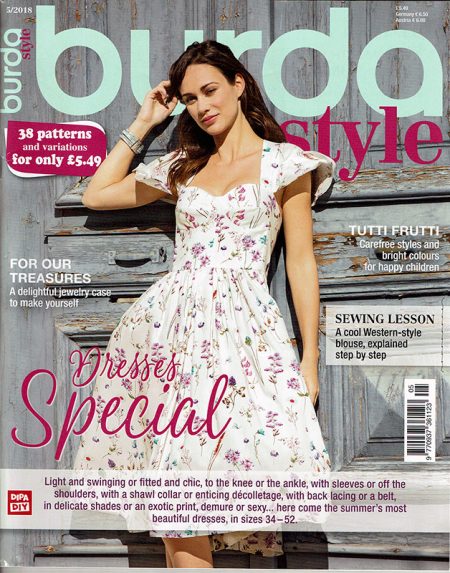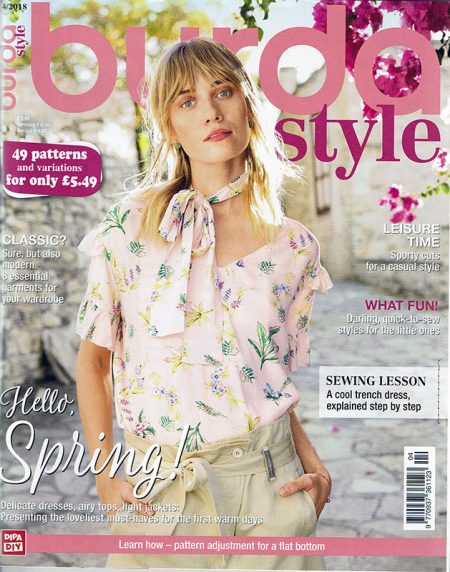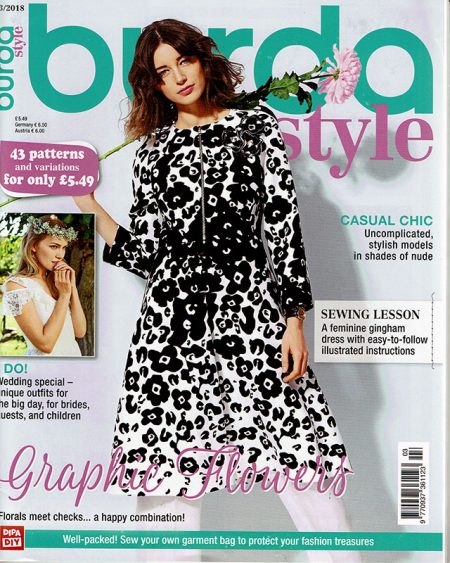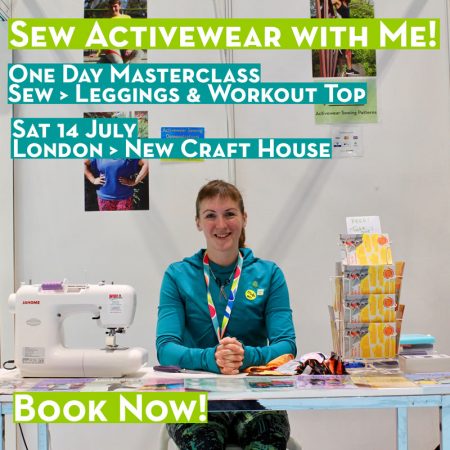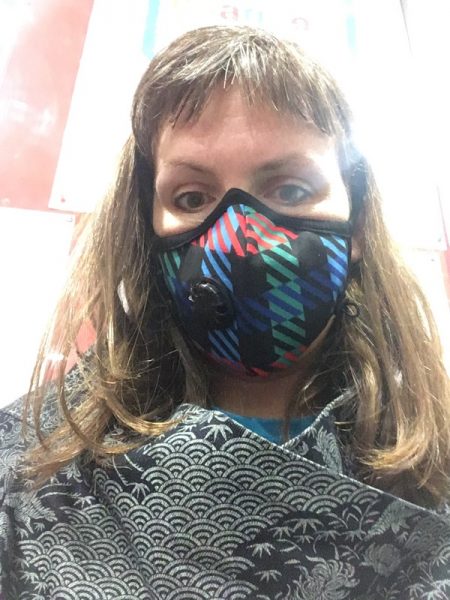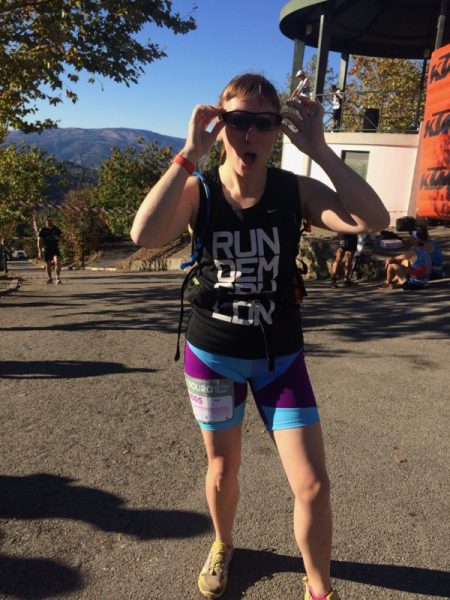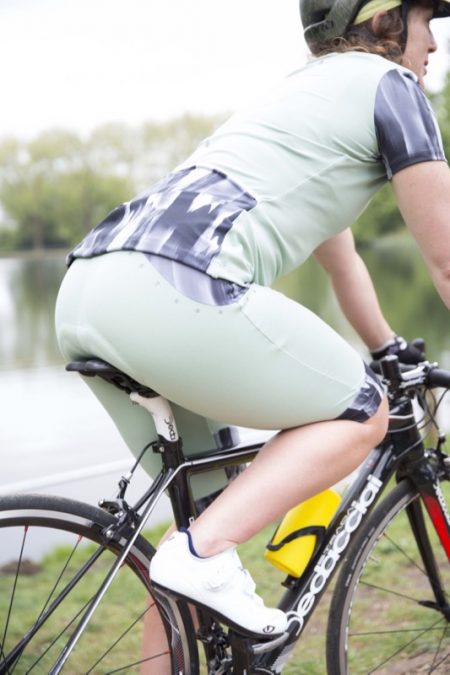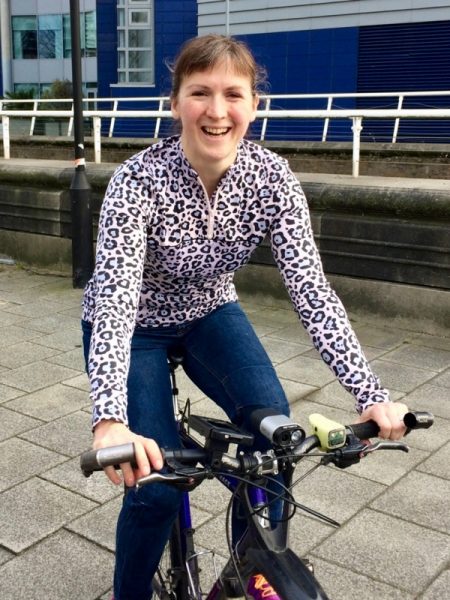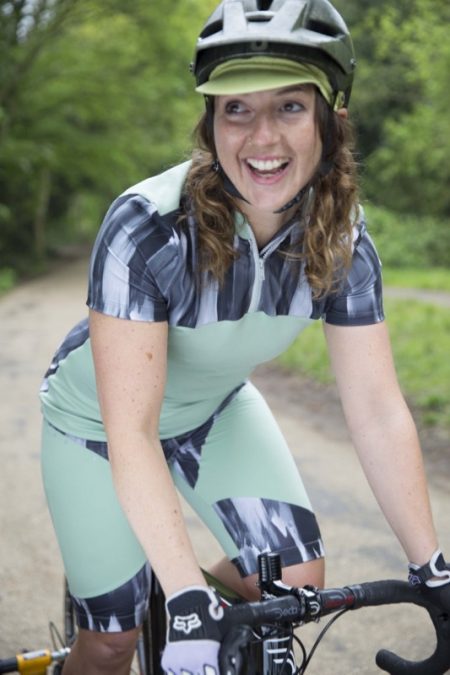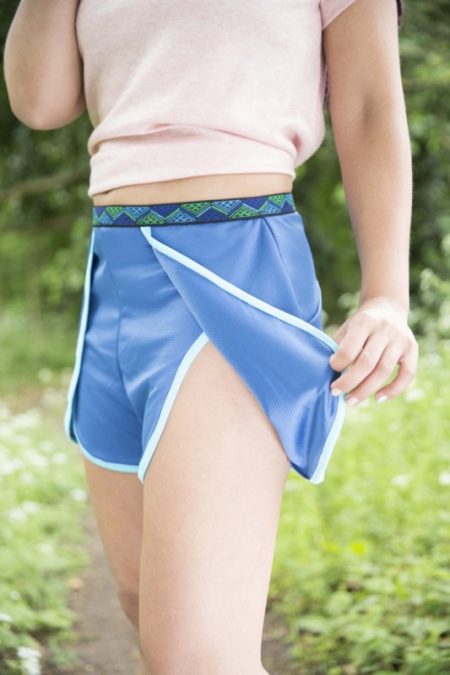And just as I thought this review would bring me up to date with the latest Burda, they go and release the June issue (which I have already, and will hopefully be reviewing soon!). As with March and April’s reviews, I’ve included links to the PDF versions of each pattern here so you can still get it if you really like a design, as I realise that the magazine itself may not be available anymore.
Burda magazine May 2018
Burda magazine April 2018
Hot on the heels of my delayed March review is this delayed April review! 😂 As with March, because this issue isn’t available on most newsstands anymore (except Australians, who’ll have to wait a few weeks to get it), I’ve included the links to the PDF versions of the patterns in case you see something you like!
Burda magazine March 2018
First of all, thank you all for your well-wishes on my health. I’d love to tell you that my posting again means I’m feeling better, but it’s more a case of the number of “blog posts I need to write” building up so high that the anxiety levels are outweighing the effort involved to write them. And it’s kinda ridiculous that I’m writing about the March Burda in May, but getting this issue was a drama in and of itself, since for some reason it wasn’t on any of the usual newsstands in London, and then the issue I ordered online got lost in the post, so I had to order another copy off eBay, ugh. But because my March, April, and May reviews are so late, I’ve included links to the pdf patterns on BurdaStyle.com so you can still grab the pattern if you want to.
Activewear Masterclass with me!
First of all, thank you for all your kind Get Well Soon messages! I’m really hoping to feel […]
An uninvited rest period
Sorry for the radio silence over the past few weeks. I try to keep to a regular (and on-topic!) post schedule but having partially recovered from the awful flu I’d picked up in February, I then had three other separate, nasty viruses jump on board for the ride, meaning I’ve been sick for over 2 months now. 🙁
Two pairs of Cycling Shorts
These are the final garments I’ve got to show you from my “Sew Your Own Activewear” book – for now, anyway! And it’s fitting that I’ve saved these to the end because I wore both of these shorts hard all summer long, and I wanted to show again how you can mix and match features to make garments that work for you. The thirteen designs in the book were only ever intended as a starting point – you have my full permission and encouragement to change them up, repurpose bits of one design onto another, and make what works for you and your chosen exercise!
So in that spirit, last summer I decided I loved the Cycling Shorts design, but I wanted them for running. So I didn’t increase the back rise (a cycling-specific adaptation that’s not needed for running), and I also left off the chamois padding and silicone hems for similar reasons.
The “Sew Your Own Activewear” Cycling Shorts
I can’t quite believe it, but this is our final week and 13th design from my “Sew Your Own Activewear” book! It feels like just yesterday it was the start of January and I finally got to tell you all about the first of the designs in the book. And here we are, 13 weeks later, and I’ve taken you in-depth on each one of them. I’ve saved one of the best for last, though, and I think you’ll find that the Cycling Shorts are a super stylish addition to your activewear wardrobe, even if you never climb onto a bike!
My birthday animal-print Cycling Top
Happy 39th birthday to me! (And coincidentally to Rosie DIY Couture, though I don’t think she’s as old as me!) Yesterday was my birthday, and thank you so much to everyone who wished me well on social media – I’d planned to get this post up on the day itself, but I ended up spending my day packing and hefting boxes as we moved into the temporary flat we’ll be living in while the boat is being renovated! We only really took these photos as we were loading my bike into the rental van to move it to the flat (you can even see it in one of the shots!) so please forgive that the photos aren’t as clear or comprehensive as usual – they were taken very quickly on my phone on a very tiring day!
Every year I like to make myself something special to celebrate my birthday, and often these garments get so closely tied in my memory to that time in my life that I still refer to my green silk dress as “my 30th birthday dress”, for instance, and it means I get to do a bit of selfish sewing for myself, too!
This year I decided to make something I’ve been planning for months and months – ever since I bought a length of pale pink & lavender leopard (or is it cheetah?) spotted activewear fabric from Stoff & Stil in Oslo back in November. I then realised I hadn’t bought quite enough to make the Cycling Top I had envisioned in my head, so I had to order another meter from Stoff & Stil online, which ended up being from a slightly different dye lot (it’s only noticeable if you get really close!).
The “Sew Your Own Activewear” Cycling Top
What’s an activewear book without some cycling kit? Not much of an activewear book, if you ask me, so I knew that I absolutely wanted to include some cycle-specific gear when I was developing the designs for my “Sew Your Own Activewear” book. I’d already developed a great cycling top (as well as all-around winter exercise and rashguard!) when I’d made my Surf to Summit Top pattern (also available for men!), so I wanted to take some learnings from that and make the book design different enough that cyclists would want to make both!
How to make your Split Shorts less revealing
I designed the Split Shorts in my “Sew Your Own Activewear” book to have the greatest mobility possible to minimise the chance of the inseams riding up while running (a really common issue with running shorts!). These shorts do show a bit of thigh, but the back of the shorts stay close to the body, and the inseams really do stay put. In fact, they can be mistaken for a skort or running skirt while you’re in motion, and they look really feminine!
But some of you may find that the Split Shorts as drafted in the book are a little more revealing than you’d like, and the good news is that there are two easy ways to adjust for this! Note that by making these less revealing, though, you are limiting the mobility of the leg, so be sure to make incremental steps and sew and test your muslins along the way to make sure you can still move effectively in them. But if you’re planning to wear these for an activity that doesn’t require the extreme amount of forward leg motion needed for running, then modesty may be more important to you than the range of motion anyway!

